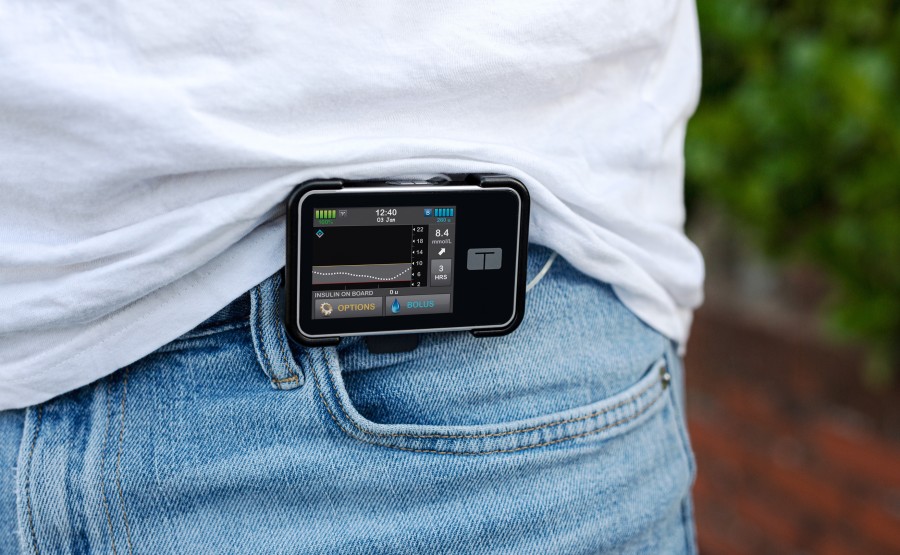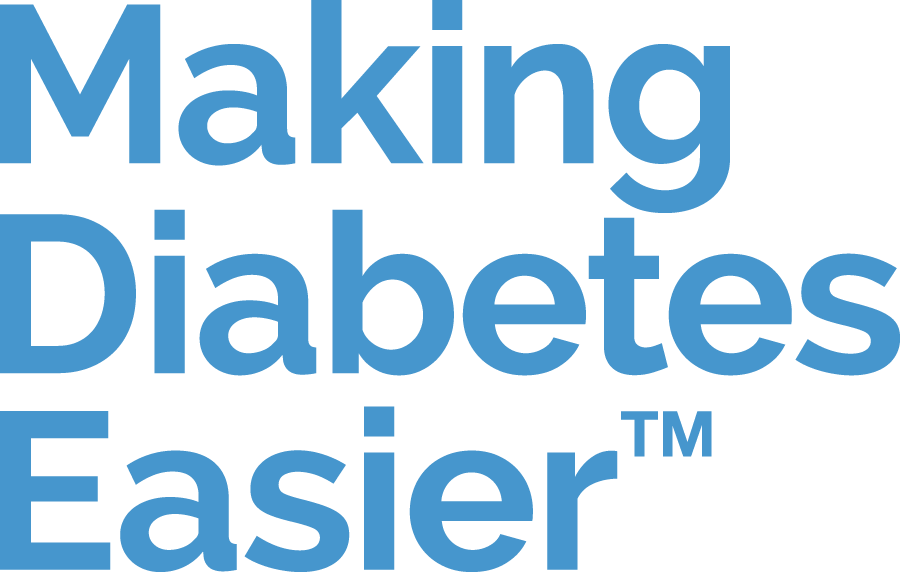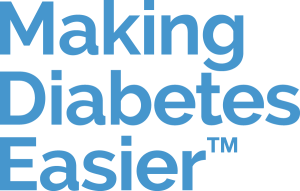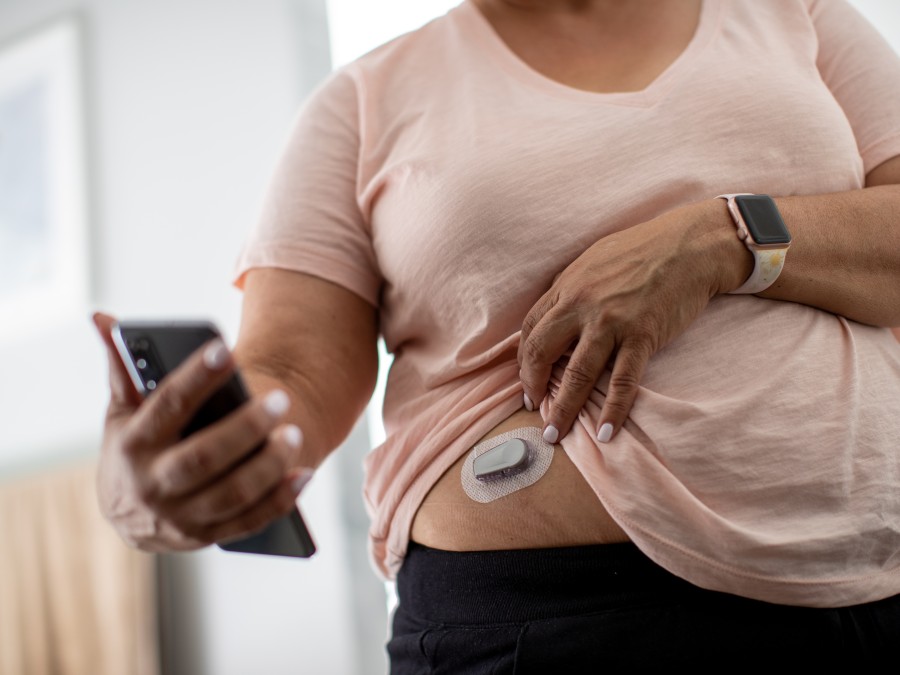What Is An Insulin Pump And How Does It Work?

What Is An Insulin Pump And How Does It Work?
If you’ve been newly diagnosed as having type 1 diabetes and you are thinking about using an insulin pump, you’ll probably want to know more about this type of insulin therapy and how it works.
In the article below, we take a closer look at insulin pump therapy, how an insulin pump works, and the advantages of using one.
What is an insulin pump?
An insulin pump is a battery-operated device that delivers insulin into a person’s body in two ways — as a continuous basal rate of small amounts of fast-acting insulin, and an insulin bolus (discrete, one-time doses) at mealtimes. Insulin is the hormone that keeps blood glucose levels in check and it is secreted by the pancreas.
In people with diabetes, insulin is either not produced in sufficient amounts or it does not work properly. By mimicking the natural process of insulin delivery, insulin pumps help people with diabetes regulate their blood glucose.
Insulin pump therapy, also known as continuous subcutaneous insulin infusion (CSII), is generally used for the management of type 1 diabetes. However, the use of insulin pumps for people with type 2 diabetes is on the rise globally.
How does an insulin pump work?
A traditional insulin pump delivers rapid-acting insulin through a small catheter, or tube. The small tube is placed under the top layer of the skin, usually on the abdomen, and secured with adhesive.
The tube is called a cannula and the place where it is held under the skin is called an ‘infusion cannula’ or ‘infusion set’.
The tube connects the pump to the infusion set, which infuses insulin into the tissue under the skin. The infusion site is typically on the upper arm, abdomen, lower back, or upper thigh.
Some insulin pumps, called ‘patch pumps’, do not require a tube and stick directly to the skin. Insulin is delivered through the infusion cannula, but these patch pumps are wireless, tubeless, and controlled remotely.
Insulin pumps deliver insulin in one of two main ways:
-
Small, predetermined, continuous infusions throughout day and night. This is called basal insulin delivery and it is intended to mimic optimal, non-diabetes glucose levels.
-
The other way is called bolus insulin delivery, and it refers to additional, one-off doses of insulin that a person with diabetes may require before or after meals to keep their blood glucose in check.
Most insulin pumps contain a bolus calculator that works out a recommended bolus dose using the current blood glucose levels, the total grams of carbs consumed, and the remaining insulin from previous bolus doses.
The advantages of insulin pump therapy
Although commercial insulin pumps were made available in the 1970s, it took three more decades for the benefits of this new technology to become widely popular.
The potential benefits of CSII became clear after the Diabetes Control and Complications Trial (DCCT) Research Group published a report in 1993. This landmark clinical trial showed that intensive insulin therapy is important for avoiding the complications of diabetes. Since then, insulin pump therapy has advanced in such a way that it can help patients achieve good glycaemic control while minimising the risk of hypoglycaemia.
What are the advantages of an insulin pump?
There are many advantages of insulin pump therapy. These include:
-
Insulin dosing is more precise, more flexible, and involves fewer injections. The doses of insulin are easily adjustable throughout the day. This improved dosing makes it easier for people to take control of their blood glucose levels and lead a flexible, more relaxed lifestyle, particularly in social situations.
-
With insulin pumps, there is a lower risk of hypoglycaemia at night.
-
Insulin pump therapy may also offer mental health benefits. Some studies have reported insulin pump users had better mood, lower stress, and improved self-confidence.
-
People living with diabetes who use insulin pumps also reported more energy, better family relationships, and the ability to perform better at work.
-
Some studies have suggested that insulin pump therapy may be helpful for young people with type 1 diabetes. The use of insulin pumps was linked with better metabolic control in this population.
-
The risk of severe hypoglycaemia or diabetic ketoacidosis is lower in people who use insulin pumps.
-
A recent study has shown a decrease in cardiovascular mortality among people with diabetes who used insulin pump therapy. Insulin pump use is also associated with less variability in glucose levels and better quality of life.
These are some of the advantages of using an insulin pump, but it is important to be aware of the potential risks too.
What are the risks of an insulin pump?
There are several concerns around the use of insulin therapy. These include:
-
The cannula needs changing every 2–3 days as potential problems may arise if the infusion cannula is not changed appropriately. The cannula may dislodge, or lumps of fat or scar tissue may form under the skin where the infusion cannula is placed. A blocked cannula or a cannula that leaks fluid from the infusion site may also cause problems, such as interruptions in insulin delivery.
-
Localised skin infections — which can cause inflammation, soreness, redness and swelling — may occur at the infusion site, but they are rarely serious.
-
Problems may arise around the technical function of insulin pumps, such as mechanical malfunction, infusion set failure, blockage or kinking in the infusion set, and issues with alarms (when used in conjunction with CGM).
-
Because an insulin pump can deliver smaller amounts of insulin, the risk of diabetic ketoacidosis (DKA) is greater if the insulin delivery is stopped for any reason (e.g. if the pump stops working or there is another illness that interferes with its use) [7]. However, in practice, studies show that insulin pump therapy is associated with lower or similar rates of these complications compared with other therapies.
-
Some people may find an insulin pump difficult to wear or they may dislike feeling ‘attached’ to it.
-
There is a level of training and understanding needed to be able to use the insulin pump and its technology effectively.
The future of insulin pumps
Overall, the use of insulin pumps is increasing rapidly, particularly among people with type 1 diabetes. A large registry of over 100,000 people with the condition found that its use has increased from 1% to 53% over the course of 20 years.
The number of people with type 2 diabetes who are turning to insulin pumps is also increasing. The technology is vastly improving, as continuous glucose monitoring (CGM) systems are being integrated with insulin pumps to provide a seamless and more effortless experience.
Together, these innovations are reshaping how we think about diabetes. Such therapies can improve people’s quality of life, empowering them to achieve their goals and enjoy more freedom.
Discover more
Live Presentations

Sources
- Berget, Cari, Laurel H. Messer, and Gregory P. Forlenza. "A clinical overview of insulin pump therapy for the management of diabetes: past, present, and future of intensive therapy." Diabetes Spectrum 32.3 (2019): 194-204. https://diabetesjournals.org/spectrum/article/32/3/194/32620/A-Clinical-Overview-of-Insulin-Pump-Therapy-for
- Paldus, Barbora, Melissa H. Lee, and David N. O’Neal. "Insulin pumps in general practice." Australian prescriber 41.6 (2018): 186. https://www.ncbi.nlm.nih.gov/pmc/articles/PMC6299172/
- Yao, Phil, and Prasanna Tadi. "Insulin Pump." StatPearls [Internet] (2020). https://www.ncbi.nlm.nih.gov/books/NBK555961/
- Vettoretti, Martina, and Andrea Facchinetti. "Combining continuous glucose monitoring and insulin pumps to automatically tune the basal insulin infusion in diabetes therapy: a review." Biomedical engineering online 18.1 (2019): 1-17. https://link.springer.com/article/10.1186/s12938-019-0658-x
- Röder, Pia V., Wu, Bingbig., Liu, Yixian, Han, Weiping. “Pancreatic regulation of glucose homeostasis.” Experimental & Molecular Medicine, 48, e219. (2016): DOI:10.1038/emm.2016.6. https://pubmed.ncbi.nlm.nih.gov/26964835/
- Dovc, Klemen, and Tadej Battelino. "Evolution of diabetes technology." Endocrinology and Metabolism Clinics 49.1 (2020): 1-18. https://www.endo.theclinics.com/article/S0889-8529(19)30091-X/fulltext
- Pickup, John C. "Insulin-pump therapy for type 1 diabetes mellitus." New England Journal of Medicine 366.17 (2012): 1616-1624. https://www.nejm.org/doi/full/10.1056/Nejmct1113948
- Potti, Lakshmi G., and Stuart T. Haines. "Continuous subcutaneous insulin infusion therapy: a primer on insulin pumps." Journal of the American Pharmacists Association 49.1 (2009): e1-e17. https://www.sciencedirect.com/science/article/abs/pii/S1544319115309456
- Ghazanfar, Haider, et al. "Impact of insulin pump on quality of life of diabetic patients." Indian Journal of Endocrinology and Metabolism 20.4 (2016): 506. https://www.ncbi.nlm.nih.gov/pmc/articles/PMC4911840/
- Karges, Beate, et al. "Association of insulin pump therapy vs insulin injection therapy with severe hypoglycemia, ketoacidosis, and glycemic control among children, adolescents, and young adults with type 1 diabetes." Jama 318.14 (2017): 1358-1366. https://jamanetwork.com/journals/jama/article-abstract/2656808
- Byng, Karen, Daniel Palamara, Roslyn Seselja, Susana Senes, Jeff Flack, and Glynis Ross, Pros and cons of insulin pump use and differences by age, National Centre for Monitoring Diabetes, Australian Institute of Health and Welfare, accessed February 9, 2022. https://www.aihw.gov.au/getmedia/56686b65-b928-4076-a7cd-16661414b0fe/insulin-pump-use-pros-cons.pdf.aspx





